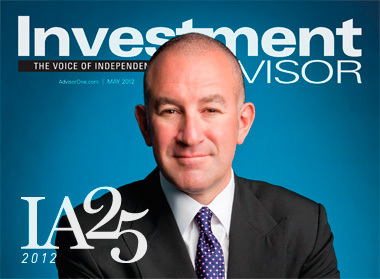At least that’s what you’d think if you only glanced at the financial news, which is why it’s important to remember the wisdom of the old axiom that all news is biased. That doesn’t necessarily mean that said news is distorted or inaccurate. Often, it just means that the very prominence of the story is out of proportion to its importance.
Apple loses 1% in an afternoon, and it’ll lead CNBC’s top-of-the-hour. Facebook announces a new privacy policy, which doesn’t even have anything to do with finances, same thing. One of the 5000 other stocks that trade on the New York Stock Exchange or NASDAQ does something significant, and the arbiters of news don’t care enough to tell you. If Mac-Gray Corporation (a commercial laundry company that puts washers and dryers in apartment buildings) raises its dividend, or Ralcorp (a private-brand food manufacturer) sells itself to ConAgra, it’s difficult to find mention of such.
Folks, this is where the value lies. In the part of the investing iceberg that’s under the surface. You can buy a 100-lot of Apple stock, which will cost $53,390 as of this writing, and eat your fingernails down to the cuticles while being reminded daily of its fluctuations. Do you really want to make an outlay that big to invest in a stock that has plenty of room to fall?
Contrast Apple with Yamana Gold, a Canadian company that mines in Mexico and South America and that has been trading on the NYSE since just a few months after its 2003 founding. The stock reached its all-time zenith of $20 a share last month, from which it’s since lost about 1/7 of its value. Yamana Gold might not be as famous nor as wealthy as Apple – the latter’s market cap is 39 times the former’s – but both companies are NYSE members in good standing, with no pending sanctions. Both are pretty profitable, too. Care to guess which has the higher profit margins?
We wouldn’t ask if we didn’t know the answer. Yamana Gold increased its revenue by almost 45% in 2010, and by a similar amount the following year. Profits have more than kept pace, representing almost a quarter of revenues in the last fiscal year.
At this point, both skeptics and pessimists look for reasons not to invest in such a company. Here are some likely objections, complete with rebuttals.
Yamana Gold makes only one product. Apple is diverse.
Yes, but this isn’t a binary world where you have to invest in one company or the other. You can buy Yamana Gold without respect to what Apple’s doing. This reinforces the point we made in the opening paragraph – stop letting the overexposed news darlings affect your decisions.
Yamana Gold’s doing well just because gold prices are rising.
Maybe, but so what? And are gold prices poised to fall? Bullion and Yamana Gold have indeed moved largely in lockstep for the last 5 years…well, actually the last 4 years. (Like most businesses, Yamana wasn’t profitable from its inception.)
Rationalization is one thing, refusing to see the potential for a good investment is something else. Along with its healthy profit numbers, both static and dynamic, Yamana Gold has also enjoyed a consistent arithmetic increase in its retained earnings – one of the most underappreciated items in a company’s balance sheet. Retained earnings have gone from $400K to $800K to $1.2M in consecutive years.
This from a company that already pays a healthy dividend of 26¢ a share. Remember, profits have to go in one of 2 places – to the shareholders (dividends), or back in the company (retained earnings). From an investor’s standpoint, which is better is largely a function of what your immediate and long-term goals are. Benjamin Graham and Warren Buffett would have you believe that dividends are the greatest invention ever, a cash payment made to you just for being smart enough to invest in a company whose large(r) shareholders insisted on voting themselves such a piece of the action.
From the other perspective, big retained earnings tell you that management is “plowing the profits back into the company”, which can be awful if the company is an unsustainable or wounded loser (see Groupon, Hewlett-Packard), but promising if the company has a history of profitability.
Yamana Gold is trading at close to its all-time high. Isn’t that a red flag?
Yes, but the company is only 8 years old. It’s a lot more likely to be reaching an absolute peak than is, say, U.S. Steel.
So yeah, invest in Yamana Gold. We are.
But Yamana Gold isn’t the focus here. Inconspicuity is. There are hundreds upon hundreds of companies that make suitable investments, hitting at least most of the criteria you want in something you plan to put your money in:
- Consistent growth
- Consistent profitability
- Low price
- Sustainable business model
There are secondary concerns too (moat, natural competitive advantage, etc.) but those are the main ones. Looking for an unheralded company whose recent history exhibits all those traits takes time, but it can well be worth it. Or you can just hold onto your position in Vanguard’s Institutional Index mutual fund and wonder why your money isn’t showing any significant gains. Your call. We’re not recommending you take unjustifiable risks, merely that you take intelligent ones. Big difference. And if this still seems overwhelming, or too condensed for you to really understand it, get our e-book: The Unglamorous Secret to Riches. It’s essentially this post, expanded and detailed for the neophyte but ambitious investor.



